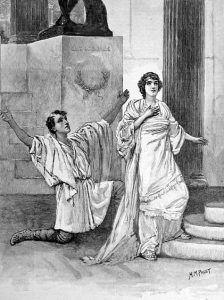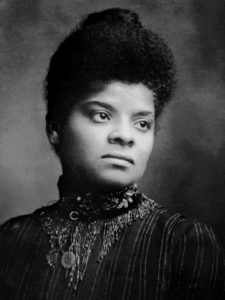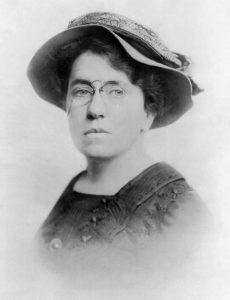Feminism
The Feminist Case for Free Speech
Could it be time to reassess global standards of free speech to mute misogynist trolls and amplify the voices of women?

“I will teach you to learn your place as a woman in this world. Then you will eat my cum.”
“SHUT YOUR WHORE MOUTH… OR I’LL SHUT IT FOR YOU AND CHOKE IT WITH MY DICK.”
“WOMEN THAT TALK TOO MUCH NEED TO GET RAPED.”
These were just a few of the tweets sent to British journalist Caroline Criado‑Perez when she campaigned to include women on British banknotes. Criado-Perez is hardly alone. On average, American men receive (and send) more online abuse than women. But gender-based online abuse targets women twice as often as men. In the UK, prominent female journalists receive about three times as much abuse as their male colleagues. Understandably, many women feel deeply uncomfortable participating in public debates in which ‘arguments’ consist of abusive messages, including threats of rape. The problem of online misogyny may be among the reasons why significantly more American women than men favor online safety over freedom of speech (63 percent vs. 43 percent). Women are also less supportive of tolerating hate speech than men (51 percent vs. 61 percent), are more supportive of laws targeting online abuse than men (36 percent vs. 24 percent), and 54 percent of American women favor banning sexually explicit public comments compared to 36 percent of men.
Credible threats of rape or other forms of sexual violence are typically not protected by free speech and should be vigorously prosecuted. But – depending on the jurisdiction – much online abuse falls below that threshold, and is therefore not illegal. For anyone concerned with gender equality, inaction is clearly not an option in the face of virulent online misogyny. Could it be time to reassess global standards of free speech to mute misogynist trolls and amplify the voices of women?
As we debate this question, however, we must not forget how important freedom of speech has been to the empowerment of women. Restricting speech may therefore prove to be a cure worse than the disease it is intended to treat. This dilemma is highlighted by a new study from Amnesty International that urges Twitter to clamp down harder on gender-based abuse and threats of violence. But the study operates with a broad definition of abuse which may include:
[O]ffensive, insulting or abusive language or images directed at women on the basis of their gender and is intended to shame, intimidate or degrade women. Sexist or misogynistic abuse often includes references to negative and harmful stereotypes against women and can include gendered profanity.
While the study reports a shocking number of rape and death threats, it also includes examples such as “Are you a boy or a girl?” and “Are you really a man?” While such comments are clearly meant to offend and do nothing to further constructive debate, they are clearly less intimidating than threats. The Amnesty study also shows that the majority of the comments identified fall into the hard-to-define categories of “abuse” or “sexism/misogyny” rather than “threats” (direct and indirect), the posting of intimate pictures without consent, or the disclosure of personal details, all of which will often fall outside the protection of free speech. The study urges both Twitter and governments to do more to counter these phenomena, including the use of “criminal penalties.” However, if governments and social media companies adopt an overly broad definition of “abuse,” they may risk hurting rather than strengthening the rights of women in the long run.

Throughout history, the denial of free speech has been instrumental in keeping women disenfranchised and subordinate, and the exercise of speech has been crucial to climbing every rung of the long ladder toward equality. Although ancient Athens was the birth place of democracy and free speech, women were excluded. Aristotle (in)famously wrote that, “Silence is a woman’s glory.” But uninhibited speech allowed writers like Sophocles and Aristophanes to write tragedies and comedies that restored female voices and agency. In Aristophanes’ Lysistrata, women weary of the war between Athens and Sparta refuse their husbands sex until they agree to end hostilities. Aristophanes may not have been a proto-feminist, but Lysistrata has inspired women and outraged the defenders of patriarchal oppression ever since. For decades, importing and distributing the play was forbidden, even in the US.
In the Roman Republic, women were also cut out of the power loop and forbidden from serving as magistrates and voting in assemblies. In 195 BC, two magistrates proposed repealing a law prohibiting women from wearing luxury items, including expensive clothing. The proposal ignited a tumultuous debate around the Forum. But, in history’s first Women’s March, Roman women found their collective voice. The ancient Roman historian Livy records that:
The matrons could not be kept at home by advice or modesty or their husbands’ orders, but blocked all the streets and approaches to the Forum…The crowd of women grew larger day by day. Soon they dared even to approach and appeal to the consuls, the praetors, and the other officials.
The sight and sound of women protesting in public was shocking to many Roman men. Cato the Elder, a deeply conservative politician, insisted that women needed “guardians” and should be “under the control of fathers, brothers, husbands.” But now “Heaven help us! [We] allow them even to interfere in public affairs.” But Roman women persisted and – in a spectacular political victory for the women of Rome – the law was repealed.

Hypatia was Alexandria’s most brilliant mathematician and philosopher in the late 4th Century AD. She was also a pagan at a time when the Roman Empire had become Christian and intolerant of pagan ideas on religion, philosophy, and science. Hypatia’s prestige became a thorn in the side of Alexandria’s fanatical bishop Cyril, who was known for using gangs of thugs to enforce his religious intolerance. Hypatia was blamed for the poor relations between Alexandria’s governor and Cyril, and soon rumors spread that Hypatia used magic and witchcraft to beguile the governor and turn him away from the Christian faith. In 415, the incitement against Hypatia culminated with a mob of fundamentalist Christians dragging her through the streets to a church. According to one account, her assailants stripped her naked and used broken tiles to cut off her flesh before burning her mutilated body.

1300 years later, the Enlightenment would produce its own female martyrs to freedom of expression and thought. During the French Revolution, the feminist writer Olympe de Gouges drafted the “Declaration on the Rights of Women,” boldly declaring that “Woman is born free and remains equal to man in right.” (A right overlooked by the original 1789 Declaration on the Rights of Man.) But when De Gouges criticized the increasingly extreme measures of the revolutionaries, she was arrested for attacking the sovereignty of the people. In her Declaration, De Gouges insisted that no one should be persecuted for their opinions: “Woman has the right to mount the scaffold, so she should have the right equally to mount the rostrum.” She was denied the latter, but granted the former on November 3, 1793 when she was guillotined for her opinions.

Free speech has been particularly important to women from minority backgrounds. In the 1890s, Ida B. Wells had become a shareholder in a newspaper called the Memphis Free Speech, and she used her platform to expose the systematic lynchings of black people. Her investigative journalism showed that lynchings were not about upholding law and order or protecting white women, but were simply a brutal way of subjugating black people and enforcing white rule. Wells did not mince her words, and might well have become an American Hypatia. A furious editorial in a white newspaper responded that “the black wretch who had written that foul lie should be tied to a stake at the corner of Main and Madison Streets,” tortured with “tailor’s shears,” and “then be burned at the stake.” The incitement worked. The office of the Free Speech was stormed by a mob, the press was destroyed, and the premises burned. Death threats reached such an intensity that Wells was forced to flee to Chicago. From there, she would continue to exercise her free speech rights and campaign for the advancement of black people and all women.

Emma Goldman, also known as “the High Priestess of Anarchy,” was a Russian-Jewish immigrant who became a passionate advocate of free speech, free love, women’s rights, and anarchism in the late 19th Century. Her shocking views on morals and her abrasive personality led to many clashes with the law, and she was repeatedly harassed and arrested. In 1916, she spent two weeks behind bars for distributing pamphlets advocating birth control. When she subsequently became a vocal opponent of American participation in World War I, she was sentenced to 2 years in prison and deported to the Soviet Union. Admittedly, Goldman’s ideological anarchism has not aged well. But on women’s rights, some of the ideas that conflicted with polite opinion and the law are not so different from the views that thousands of American women loudly express in Women’s Marches across the US today.
When comparing contemporary gender inequality and press freedom around the world, a clear pattern emerges. Five of the top 10 countries listed in the 2016 Gender Inequality Index – those with the highest levels of gender equality – are also listed among the top 10 of countries with the greatest levels of press freedom. Only two countries fall outside the top 20. Conversely, among the 10 countries with the least gender equality, only four nations made it into the press freedom top 100 and only one climbed into the top 50.
Correlation is, of course, not the same as causation, but recent examples support the historical examples above regarding the vital importance of free speech for women. In February 2018, 29 Iranian women were arrested for protesting the country’s compulsory headscarf law, which is used by the country’s clerical regime to subjugate women. In Russia, the female punk-group Pussy Riot was sentenced to harsh penalties for protesting the close relationship between the Putin Regime and the Orthodox Church, and two members of the group have subsequently sought asylum in Sweden. In March 2015, a 27-year-old Afghan woman named Farkhunda Malikzada suffered Hypatia’s horrific fate when she was beaten to death and burned by a mob on the streets of Kabul after rumors were circulated that she had desecrated a Quran.
In the developed democracies of the West, meanwhile, a mere hundred years separate an era in which women who voiced their opinion on controversial issues were harassed and jailed, from the current era in which that right is taken for granted. Both the data and the examples of past and present ought to remind us that, in the struggle for women’s rights, the centrality of free speech to the quest for emancipation and equality must not be taken for granted.






